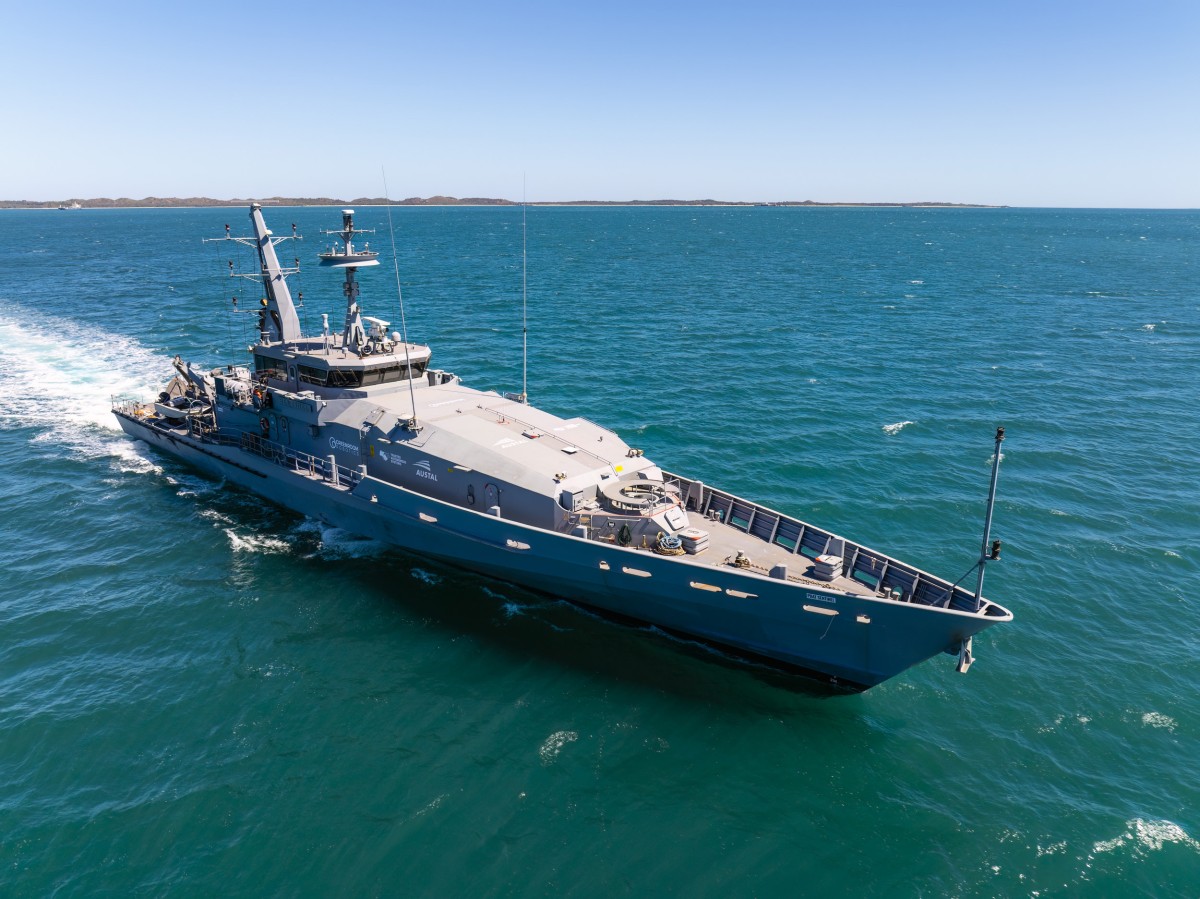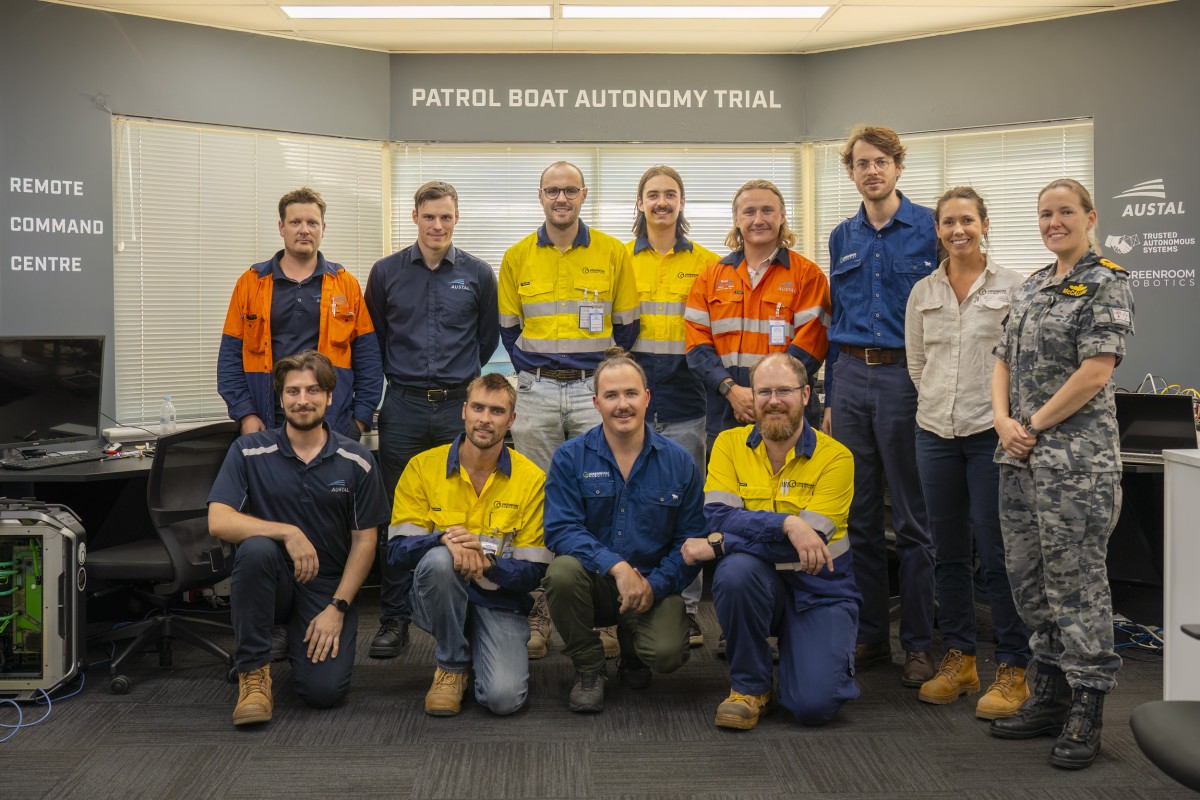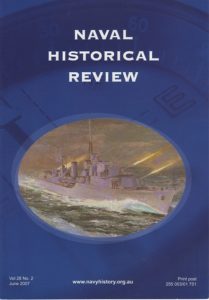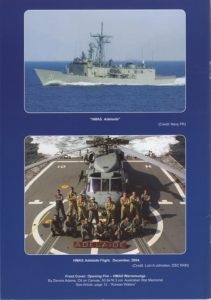- Author
- Editorial Staff
- Subjects
- Ship design and development, Naval Technology
- Tags
-
- RAN Ships
- HMAS Maitland II
- Publication
- June 2024 edition of the Naval Historical Review (all rights reserved)
Many stories are received of autonomous craft but these are mostly small prototypes, possibly of limited capability in an offshore environment. The trials now being conducted by Austal Australia using the ex‑Armidale class patrol boat HMAS Maitland, which decommissioned on 28 April 2022 after 16 years of naval service. represent a considerable upgrading of this capability as outlined in this recent media release.
In a noteworthy development within the Australian maritime sector, the collaborative Patrol Boat Autonomy Trial (PBAT) project has successfully completed Sea Acceptance Trials (including Endurance Trials) of the remote and autonomously operated vessel, Sentinel.

The trials, conducted by Austal Australia, consisted of a series of remote and autonomous navigation events conducted off the Western Australian coastline during March and April 2024; utilising Greenroom Robotics Advanced Maritime Autonomy (GAMA) Software to reliably navigate the decommissioned Armidale-class Patrol Boat. Throughout the trials, a limited number of project team members, observers and a crew from International Maritime Services (IMS) were on board, ensuring a swift response in case of any unforeseen deviations or necessary manual interventions.
Funded by the Commonwealth of Australia, PBAT is a collaboration between Austal Australia, Greenroom Robotics, Trusted Autonomous Systems and the Royal Australian Navy Warfare Innovation Navy (WIN) Branch to establish robotic, automated and autonomous elements on a former Navy patrol boat to provide a proof-of-concept demonstrator, for optionally crewed or autonomous operations. The trial has also explored the legal and regulatory pathways and requirements of operating an autonomous vessel.
In 2022, Austal Australia took possession of the decommissioned HMAS Maitland from the Commonwealth of Australia, renamed the vessel Sentinel and commenced planning, modification, testing and evaluation of autonomous and remotely operated systems for PBAT. At 57 metres LOA, Sentinel is (by a significant extent) the largest vessel operated remotely and autonomously in Australia.
Sentinel was extensively modified to enable remote and autonomous operations, including modifications to navigation, communications, bilges, CCTV, and electrical systems. Sensors and computer units were also added by Greenroom Robotics to inform and host the Autonomous Control System, GAMA.
Austal Limited Chief Executive Officer Paddy Gregg said the completion of the sea trials marks a significant milestone in the Patrol Boat Autonomy Trial, successfully demonstrating the capability of the locally developed autonomous systems and their integration within a full-size, Australian made naval vessel.

The PBAT team, comprising Austal, Greenroom Robotics, TAS and Navy WIN Branch, have worked exceptionally hard and achieved the objectives of the trial – to demonstrate the autonomous technology successfully within a complex regulatory and operating environment.
‘Looking ahead, we are excited about the potential opportunities to work with Navy to further advance the autonomous technology demonstrated during the trial, on projects such as the Large Optionally Crewed Surface Vessels (LOSV), recently announced by the Australian Government as part of the Surface Combatant Fleet Review,’ Mr Gregg said.
Greenroom Robotics Chief Technology Officer Harry Hubbert said: ‘PBAT has been a very successful collaborative project between Austal, Greenroom, TASDCRC and the RAN, the insights from all parties has been instrumental in steering us toward success. Together, we’ve harnessed collective expertise to deliver this groundbreaking project, setting the stage for a future brimming with maritime capability. This collaborative effort not only has the potentialto enhance current operations and platforms but also paves the way for unprecedented advancements on the horizon.’
TAS Chief Executive Officer Glen Schafer said ‘Trusted Autonomous Systems are extremely impressed and proud of the achievements of the PBAT project. Autonomous and automated features on a vessel of this size in addition to the regulatory considerations are complex. It is a clear demonstration of the significant innovation possible through investment in sovereign industry’.
Commodore Michael Turner, Navy’s Director General Warfare Innovation Navy said ‘PBAT stands out not only for its demonstration of autonomous technology and its practical application to operational vessels, but also for the spirit of collaboration that underpinned its success.’
Objectives:
- Significantly progress the concept of remote operations and the autonomous certification approach;
- Increase the understanding of fuel management, communication, and navigation systems to be made autonomous;
- Investigate and understand the sustained operation of shipboard mechanical systems without crew intervention, including systems of redundancy and reliability to support operations at sea for extended periods;
- Provide input to long-term risk reduction for future naval projects, considering remote or autonomous vessels. This will be extended to other sensors and autonomous vehicles once the initial trial is complete; and
- Transfer lessons learned on the application of remote or autonomous systems to the Royal Australian Navy’s current fleet to potentially optimise crew workload. Remote and autonomous operation has the potential to reduce crew workload and increase operational safety by reducing human error.




